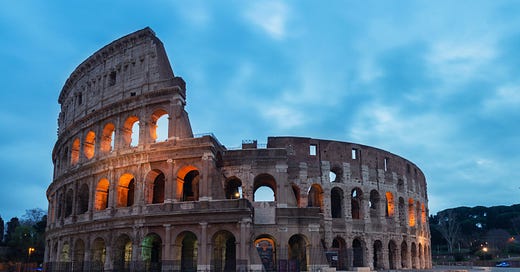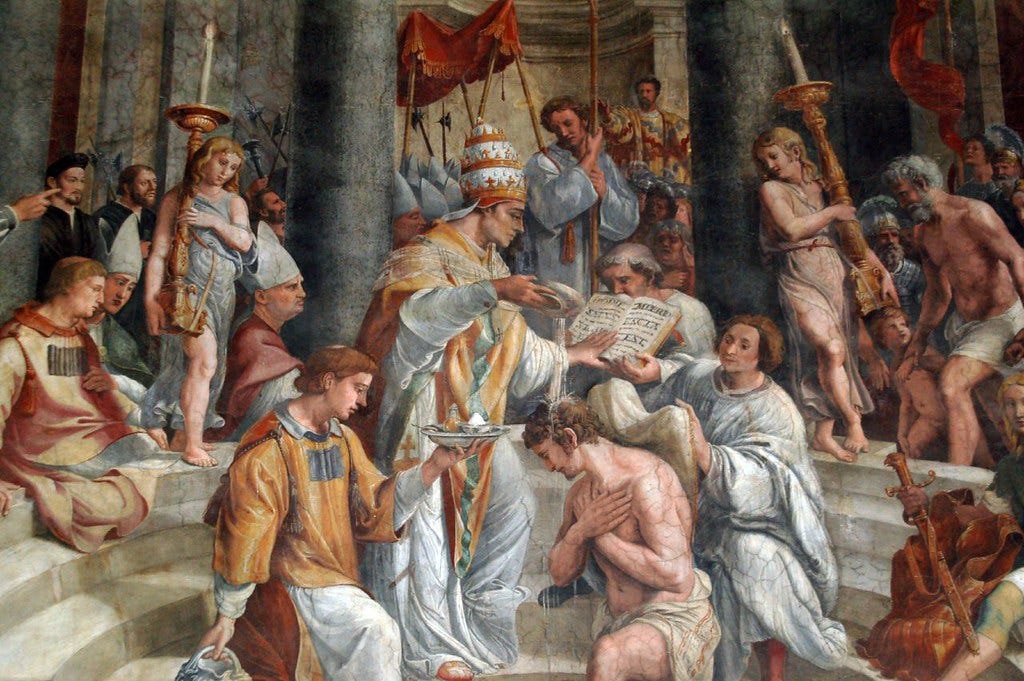This essay is the last in a five part series. Part 1 is about the ubiquity of debt forgiveness in pre-Greek and Roman societies. Part 2 connects debt to the idea of an apocalypse. Part 3 relates apocalyptic religion to psychedelic drugs. Part 4 focuses on the twin illusions of time and ego. And finally, Part 5 reveals the true meaning of the Holy Grail.
Holy Grail
The Holy Grail is, of course, a symbol. That much seems uncontroversial. But what is it a symbol of? In his 2003 thriller The Da Vinci Code, Dan Brown suggests that it symbolizes the bloodline of Jesus Christ in the person of his wife, Mary Magdalene; that it’s a symbol for the lost idea of the sacred feminine. The Da Vinci Code is one hell of a read, but Brown was only flirting with the real truth about the grail. In reality, the feminine symbol of the magic cup goes back much further than Christianity.
The Holy Grail represents a stunning realization: that we are much more than the individual people we appear to ourselves to be. We are, in fact, progressions of people. So much of what we are is handed down to us from our parents and passed on to our children. We are a series of waves lapping at a shoreline, more than we are any single one of those individual waves.
There are many ways of getting at this fundamental truth. You can fast for weeks on end. Or meditate alone in a cave every day for years. Or you can have a child. You can transcend time and individuality by creating a copy of yourself, and watching that copy act out your own life again as it carries your strengths and weaknesses into the future. Just as your parents watched you. And hopefully you live to watch that child have children of its own and repeat the process again. This insight that comes from the transcendence of time and individuality is available to all genders, but it is especially poignant for women, who feel their bodies—previously experienced as a single individual—divide itself into two such individuals. That’s why the secret of the Grail has always been characterized as feminine. That’s what Dan Brown picked up on in The Da Vinci Code.
Brown also suggests that the Roman church stamped out the notion that Jesus might have had a wife and a child. Mary Magdalene was recast as a common whore after it was taken over by the Roman government. Power wants us to think of ourselves as individuals. They control us by threatening our individual bodies with torture and imprisonment. Or, in today’s modern age, they sell us stuff by exacerbating the illusion of individuality. Buying behavior can be reliably induced by making us feel inadequate or insecure as individuals. Or by making us feel we need to consume to keep up with the Joneses. The egoic forces of temporal power are always suppressing the secret of the Grail because they want us to believe that we are individuals. All their power rests on us believing that illusion. That’s why The Da Vinci Code is a tale of underground societies, puzzles, and secret symbols.
The force that opposes the egoic accumulation of power and wealth might be called love. It’s the other side of the equation. It’s the thing that makes parents sacrifice for their children. It makes heroes sacrifice for their communities, in defiance of their apparent individuality. As we will see, all of history is an external manifestation of an internal struggle that takes place inside the minds of each and every one of us. This is the animating force behind the grand drama of humankind. The secret of the Holy Grail, in other words, is much older than Christianity…
Greece & Rome
The key thing to understand here is that, in addition to fasting or meditating or having children, the insight that we are more than mere individuals is available by pharmacological means. Certain plants in the forest contain psychoactive compounds that temporarily dissolve the ego. These drugs lay bare the reality that we are all a progression of people, much more than we are individual people. They work by inducing an actual experience to this effect.
That’s why the pre-Christian religions of classical Greece and Rome featured magic cups. Literal magic potions, made of those psychoactive compounds, were being drunk by the Greeks and Roman in the centuries leading up to the advent of Christianity. This is where the imagery of the Grail comes from. In the case of the grain goddess Demeter, there was a magical Kykeon. Historian Will Durant wrote that pilgrims visiting the temple of Demeter at Eleusis “broke their fast by participating in a holy communion” and were “lifted up out of the delusion of individuality”. Durant was writing about Eleusis back in the 1930s. But it was not until 2002 that a vessel used during the rites of Demeter tested positive for ergot, a magic mushroom. It now appears that the mystical Kykeon of Demeter was actually some kind of ergotized beer. All members of the Greek and Roman upper classes were initiated into these mysteries of Demeter, from Plato right on up to Julius Caesar. The same Greek people who formalized the notion of democracy were ritualistically dissolving their egos. And that’s always been the point of democracy: joint decision-making cancels out the effect of any one person’s ego. Bottom-up decision-making stands in stark contrast to the top-down decision making that characterizes early civilization. And history is the ongoing story of the human struggle to make that polar shift.
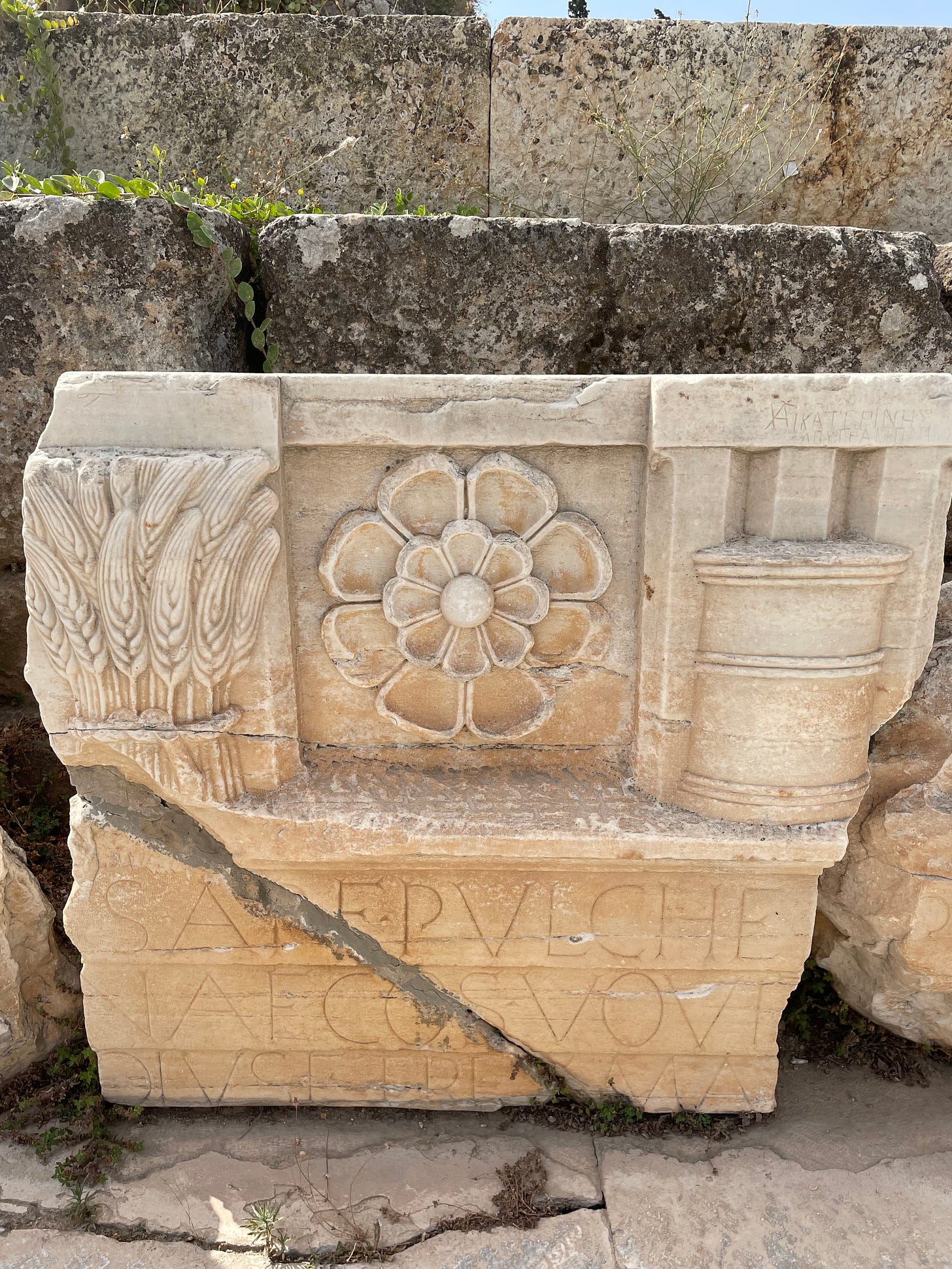
The mirror image, among common people, of the elite cult of Demeter was the wildly popular cult of Dionysus. This god of wine and intoxication arrived very late into the pantheon of Greek gods. Like Demeter, death and rebirth was a major theme of this resurrected god. And of course, his chief symbol was the Kantharos cup. Inevitably, he was resisted by the religious authorities (who were also the state authorities in those days). But such was his popularity that they had to begrudgingly accept him into Greek mythology. Dionysus’ conquest of the Greek state religion foreshadowed Christianity’s conquest of Rome. After all, the power of love—or the secret of the Holy Grail—is the animating force behind history. And history shows us that state power always loses out in the end.
The earliest human societies were downright sociopathic. One individual held all the power, and that person got to act out their ego at the expense of everyone else. Accordingly, the Roman Empire was an ethical disaster; the entire thing was built on the backs of slaves. A powerful few glorified their egos to extravagant excess—while the vast majority spent lifetimes toiling on their behalf. Those primitive human societies were structured without any regard to what life was like for most citizens. But whispers of the Holy Grail could be heard in the shadows, preparing to confront and conquer the seemingly insurmountable might of Rome.
In 186 BC, the Roman government violently cracked down the worship of Dionysus and his magical wine. Naturally, the senate saw that intoxication cult as a threat to its power. So they ordered thousands of cultists put to death. But the secret insight that we now know as the Holy Grail would not go away. Instead, it simply changed forms. The communion of the grain goddess Demeter, symbolized by wheat or bread, and the communion of the wine god Dionysus were rolled up into a brand new religion: Christianity.
The authorities, as we’ve mentioned, have a real control problem on their hands when people stop identifying with their individual bodies. Jesus demonstrated this by volunteering to have his body destroyed. Truly, the Romans knew not what they did. That gruesome public spectacle unleashed the driving force of history. The Roman authorities tried dusting off the tired old persecution playbook that they had used to combat the cult of Dionysus. But the acolytes of Jesus seemed positively delighted to be fed to lions in the Colosseum. Within 300 years of the crucifixion, the Roman Emperor himself bent the knee and accepted baptism into the church of Jesus.
Middle Ages
But in the end, the exploitative slave society that was Rome collapsed. It had to: it was predicated on constant expansion to remain stable. When Caesar wept for there were no more lands to conquer, the clock began ticking ominously on the Empire. The Roman authorities tried to save themselves from mounting disaster by dressing up as Christians. And once they had taken over, they quickly banned the magical sacraments of Demeter and Dionysus that were living on in the Christian sacrament. As the early church became the Roman church, the magical potions of antiquity became ordinary bread and wine. The Roman church demonized women who knew the secrets of all the plants in the forest; they were recast as witches. The church sought a monopoly on access to God; they couldn’t have people glimpsing the divine by plucking plants growing freely in the woods. But those who understood the feminine secret of psychedelics kept the faith alive. They shielded it from the authorities by referring to it as a magic cup. This is where our friend Dan Brown picked up the plot.
Eventually, the Fall of Rome gave way to a Medieval society. The medieval economy was stagnant, rather than being predicated on infinite growth like the Roman one had been. Counterintuitively, conditions actually improved for the average joe. Peasants typically worked three days for themselves, three days for their feudal lord, and then on Sunday they sat in church and heard about how this arrangement was ordained by God. “Since medieval agriculture was no less efficient than ancient agriculture” wrote David Graeber, “the amount of work required to feed a handful of mounted warriors and clergymen could not possibly have been anything like that required to feed entire cities. However oppressed medieval serfs might have been, their plight was nothing compared with that of their Axial Age equivalents.” Feudal society bridged the gap between the slave societies of antiquity and the modern states of today. The master-slave relationship evolved into a lord-serf relationship.
Renaissance
The evolution from the lord-serf economy of the Middle Ages to our modern employer-employee paradigm was every bit as rocky as the Fall of Rome. As the Roman church became blatantly corrupt and self-serving, its authority began to wane. A revolution in communications technology–the printing press— was underway at that time. People printed up Bibles in common languages and circulated them far and wide using the new-fangled presses. They no longer had to take the church’s word on the Latin translation, and they were appalled by what they found in the Good Book. “It revealed” wrote Will Durant “ the communism of the Apostles, the sympathy of Christ for the poor and oppressed; in these respects the New Testament was for the radicals of this age a veritable Communist Manifesto.” Actual scripture, it turned out, stood in stark contrast to the church’s shameless behavior: it was busily amassing great wealth by selling forgiveness of sin.
Matters deteriorated even further when the Black Death arrived in Europe. The clergy seemed to die of the plague at the same rate as everybody else. It's supposed monopoly on access to heaven— established by persecuting women in the know about psychedelics—was exposed as a total fraud.
Knights Templar
The final nail in the church’s coffin came from, of all places, the banking houses that sprung up in Europe in the wake of the crusades. The Knights Templar operated the first of these banks. A pilgrim on the road to Jerusalem could visit the Temple Church (which still stands today on Fleet Street in London) and exchange coinage for a letter of credit. Those letters of credit could then be redeemed elsewhere in Christendom for coins again. This prevented pilgrims from having to carry large sums of money on the dangerous road to the Holy Land, which was rife with bandits.
The Knights Templar amassed so much wealth that the Church began to view them as a threat. In 1307, Pope Clement V (at the behest of King Philip of France, who had fallen hopelessly into debt to the Templars) sent out sealed orders to arrest the Templars and extract confessions from them through torture. They stood accused of the worst crimes imaginable, like devil-worship, perversion, and pedophilia.
The only monarch who balked at the Pope’s orders was King Edward III of England. He hesitated for a few crucial months before finally bringing down the hammer on the Templars. But that head start allowed the knights to go underground and form the secret society we know today as the Freemasons. Here again we find secret societies connected to the Holy Grail. During the crusades, the Knights Templar were said to have discovered the grail underneath the old Temple of Solomon in Jerusalem. If history is a struggle between love and ego, then it is the ego that tends to have all the political power and material wealth. The ego seeks these things for its own glorification. Like the early Christians persecuted in Rome, the Templars resorted to grail symbology and secret societies to avoid being detected by the authorities.
Medicis
The Medicis of Florence ultimately succeeded where the Knights Templar had failed. They, too, ran a banking empire that amassed a fortune off the economic currents revived by the Crusades. And, just like the Templars, that brought them into conflict with the Vatican. But rather than being swallowed up by the church, the Medicis instead took it over, just as the Roman emperor had done at the dawn of the Middle Ages. Several Medicis assumed the throne of St. Peter and became popes themselves.
The fascinating thing about the Medicis is that they craved access to the magical secrets of pre-Christian Greece and Rome. In their day, the Eastern Greek fragment of the old Roman Empire was finally succumbing to history. Gunpowder was deployed onto the battlefield for the first time, and the cannons of the Sultan demolished the walls of Constantinople. Greek scholars were spread to the wind by the chaos. Word had spread that the Medicis were looking for alternatives to the corruption of the Roman church, so many of these Greek scholars made their way to Florence. Their influence ignited a Medici fascination with pre-Christian Greco-Roman culture. And so it was that the massive Medici banking fortune was used to finance a revival of Greek and Roman philosophy and the study of Greco-Roman art. The result, of course, was the Italian Renaissance.
The other fascinating thing about the Medicis was that they were obsessed with magic, and kept bizarre collections of alchemical oddities. In fact, when Medici agents rustled up an old Greek manuscript about magic called the Corpus Hermeticum, Cosimo de’ Medici ordered a halt to the monumental translation of Plato. The old patriarch of the Medici clan was getting on in years, and he wanted a crack at the magic of hermeticism before he died. The Medicis were concerned with magic above all else. The gardens outside the Medici palace in Florence are centered around statues of Demeter. The garden is a hedge maze laid out according to the notion of an alchemical journey. Like Dan Brown, they were dancing around the psychedelic secret of Greco-Roman religion but never figured it out. That discovery would have to wait until the 20th century.
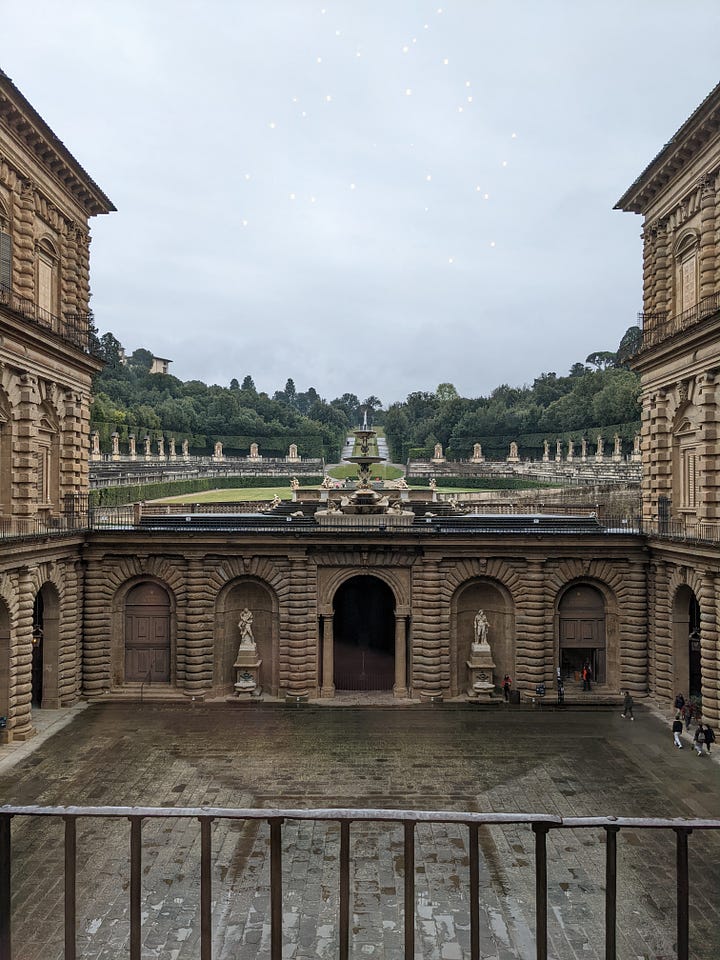
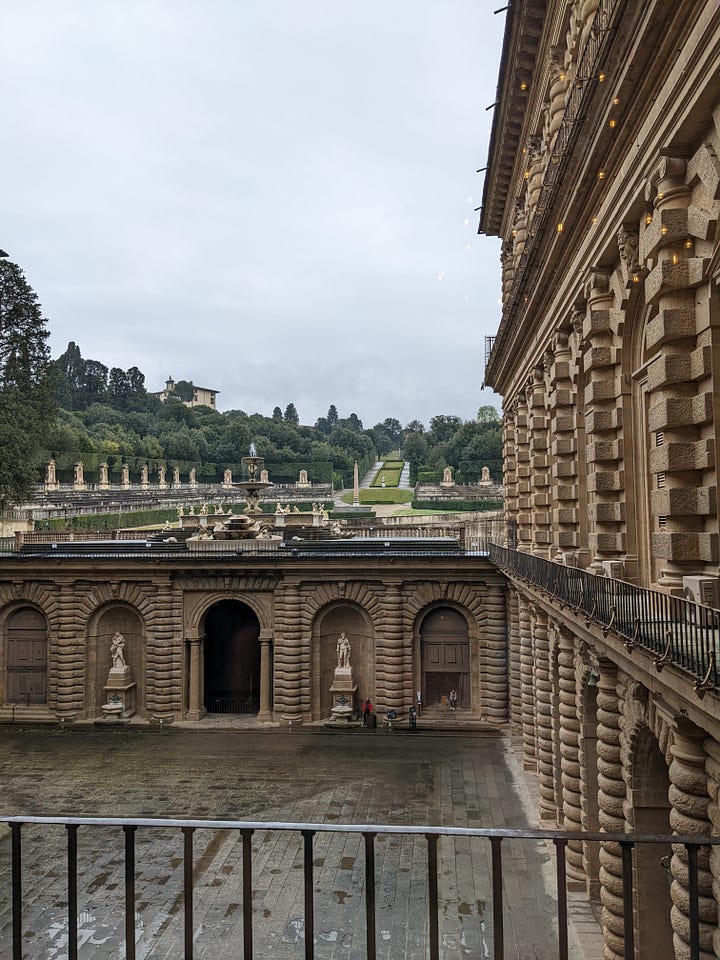
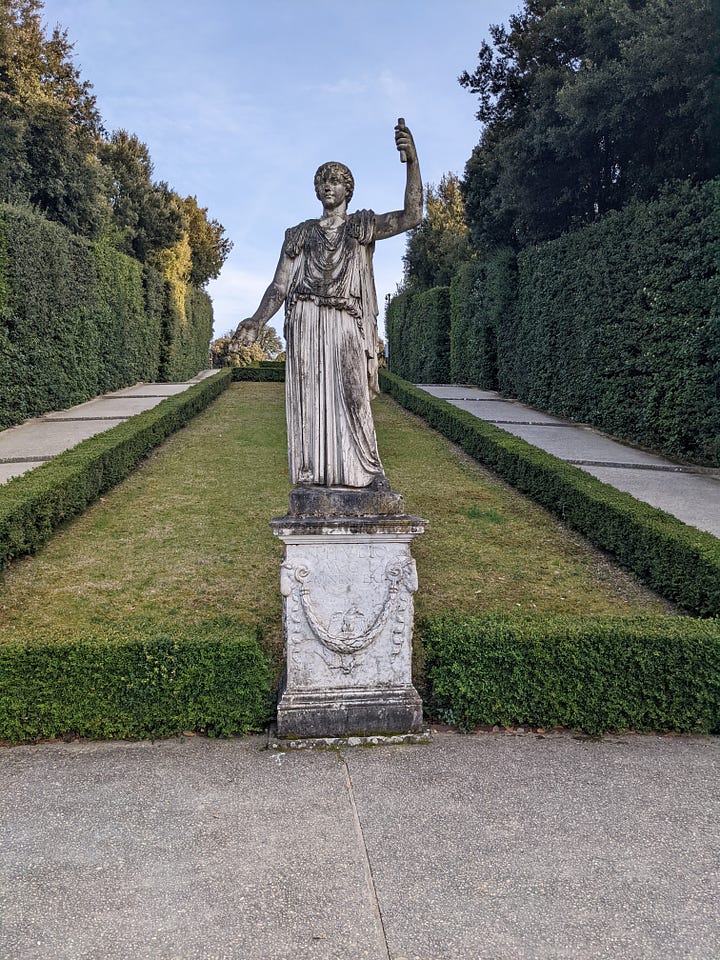
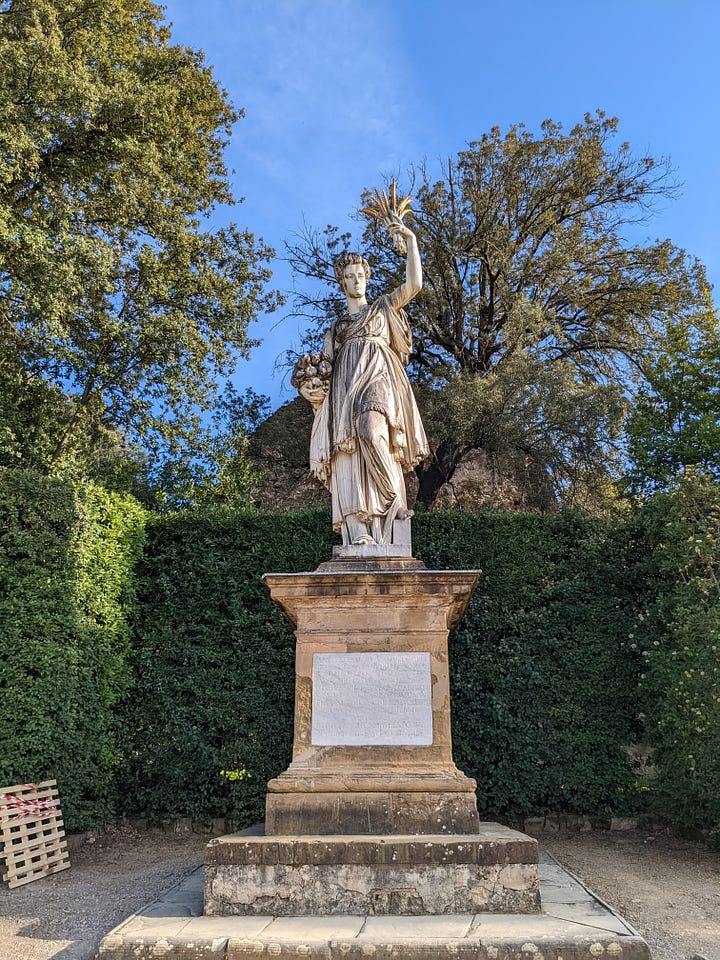
Capitalism
The Medici obsession with magic eventually brought us modern science. Alchemy morphed into chemistry. Astrology became astronomy. And a science-driven shift in perspective—that the earth orbits the sun and not vice-versa—finally destroyed the last vestiges of authority the Roman church had left. Science seized that baton of authority and used the scientific method to create the technology that drove the Industrial Revolution. A new era of rapid economic growth dawned. And of course, this rapid growth was financed by banking houses with their compound interest schemes. That is the final legacy of the Medicis of Florence.
The lord-serf economic arrangement that prevailed during the Middle Ages gave way to the employee-employer relationship we all live with today. And it was another massive improvement, just as the advance from master-slave to lord-serf had been a vast improvement for the common person. But our modern nexus of banking and scientific institutions is predicated on infinite growth, just as the Roman economy was. Horrifyingly, that means that it is doomed to an eventual Rome-like collapse. That’s why so many people today have the feeling in their gut that we are going over the falls in a barrel once again.
Marx
Such was the prophecy of Karl Marx. His suggestion was that it is a historical certainty that the employer-employee arrangement will ultimately be destroyed by the same technology that gave rise to it. And with chaos undeniably mounting 100 years later, it certainly looks like Marx’s prophecy is on the cusp of coming true.
It is interesting to notice how Marx’s work is treated as heresy. The McCarthy Era of the 1950s shares a historical symmetry with burning of heretics by the Christian church during the Middle Ages. One thing is for sure: it is very odd how, given the undeniable splash his writing made on history, that one can progress through the upper echelons of higher learning without ever being required to read a word of it.
Perhaps that’s because Marx’s work emphasizes the community over the egoic individual. Over the arc of history, we’ve watched democracy conquer every facet of public life. But individual control over the apparatus of production and distribution hasn’t proven to be the toughest nut to crack. That’s the final frontier in the polar shift from top-down to bottom-up control. One thing is for sure: power never exits the stage in a dignified manner. It has to be hauled off kicking and screaming.
Collapse
Two of the major themes of the Renaissance are with us once again during this transitional period. A new revolution in communications technology, the internet, is exposing the malfeasance of our ruling elite. Cell phone cameras are showing the world the realities of law enforcement. Twitter accounts document the shameless insider trading of our politicians just as the printing press once exposed the corruption of the Roman church. And no matter which side of the COVID debate you come down on, we can all agree that the response to it from our own authorities has been as woefully inadequate as the church’s response to the bubonic plague. It was a trip walking the streets of Florence during the recent pandemic and seeing the public, once again, wearing plague masks.
Christianity started as a scrappy revolt against the Roman imperium. But it had lapsed into a wheezing disgrace by the time the Renaissance rolled around. That’s when our modern banking-science nexus arose heroically to replace it. These systems have life cycles. They arise well-suited to certain circumstances, but then those circumstances change as history marches on. The trajectories of Roman slave society and Christian feudal society show us that the sun will also set on our modern capitalist society. As the Greek philosopher Heraclitus once remarked, “there is nothing permanent except change.”
A third eerie tie-in with the Renaissance is that of the paradigmatic shift. The discovery that the Earth orbits the sun, and not the other way around, was a stunning inversion of the reality people thought they were living in. The authority of the church never recovered from that discovery.
Science took over from the church and crowned itself arbiter of reality. It assures us, like the church used to, that we are insignificant creatures moving around inside a grand creation. But science has painted itself into a corner. The double-slit experiment and the placebo/nocebo effects are undeniable evidence that we are not mere observers of reality. We are also creating it. Just like in our dreams, which we simultaneously create and experience. The universe is actually within our minds, rather than our minds being within the universe. This is the next reality inversion that’s brewing. And it will be one hell of a shock for those who’ve complacently assumed that all our paradigm shifts are already behind us.
That’s the lesson of the Corpus Hermeticum. That ancient magical text, so coveted by Cosimo de’ Medici, suggests that we are God’s co-creators: “If then you do not make yourself equal to God you cannot apprehend God; for like is known by like. Leap clear of all that is corporeal”. That notion, the basis for all magical thinking, was declared a heresy by a church that had been hijacked by the egoic political power of a dying Roman Empire. It wanted people playing the role of repentant servant before a master with absolute authority.
That’s also the great lesson of psychedelics. The reality we thought we were living in is like reflection in a still pond on a calm day. Psychedelics are like dropping a rock into that pond. The ripples distort the previously perfect image and betray it for what it is: a mere reflection and not reality itself.
Now, in the 21st Century, the magical secrets of ego-destroying drugs have finally reentered society. Like the Medicis of Florence, who delved into the ancient past, the time has come for humanity to complete our alchemical journey by returning home. Our Holy Grail is the lost knowledge that we are not individuals bound by time. Rather, we are timeless progressions of people. Our journey through history—through master-slave, lord-serf, and employer-employee—has been long and painful. But now the time has come to complete our Grail quest and find out what comes next…


